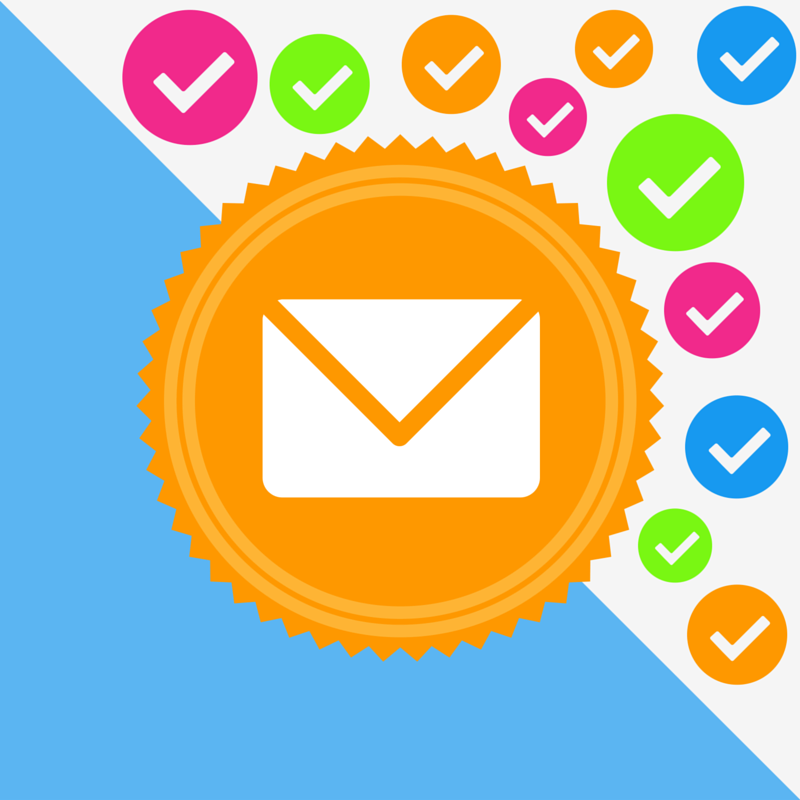Why You Should be Verifying Your Customer Email Marketing Lists
Email Marketing

Email marketing is the simple act of sending emails to customers, at least that’s how it’s been for the last 20 years. More recently, however, it seems to be getting a little bit more complicated with email senders getting punished more and more by email providers. What is the reason behind it?
Well first it’s important to first take a look at it from the email providers’ prospective. Email service providers (ESPs), such as MailChimp or Constant Contact, provide the platform for which businesses use to send off customized, bulk email campaigns.
Internet service providers (ISPs) are in charge of providing the means to deliver those email campaign messages to the end customer. ISPs can control domain name registration and hosting, email hosting (info@yourbusinessname.com), and voice over internet protocol (VOIP) phones. See the chart below for a visual:

Thanks to FTC’s CAN-SPAM Act, there have been strict rules in place regarding the information that is sent to users. Click here for the FTC’s compliance guide for businesses. If ISPs and ESPs do not comply with this act, consequences are set in place, with being blacklisted as the ultimate punishment.
ISPs, anti-spam groups, and corporate email protection services set thresholds for spam complaints, bounced emails and unsubscribed emails requests. When these third-parties begin to receive high rates of these metrics, these groups notify ESPs. ESPs then have no other choice but to warn email clients to stop sending these emails and even suspend the client from sending emails altogether.
Even if you’re not sending anything malicious, ESPs can’t tell the difference. Mail Chimp, for example uses intelligence called Omnivore to send warnings and shut down malicious email accounts. Doing something as simple as sending an email to an old list or including one too many typos can set off their threshold. In fact, high metics of spam requests, bounces, and unsubscribed requests are typically caused by old or stale email addresses.
What is a Messy Email List?
If you’ve had your list for a long time, there is a good chance you that some email addresses no longer exist. If a email contact has not opened an email in the last six month, chances are that it’s not a good idea to send emails to this person. Many spam filters are set to detect if someone is sending recurring emails that are left unopened and this is considered as a strong indicator of spam.
There’s also a chance that you’ll get caught up in a spam trap. Spam traps are email addresses used by the Internet Service Providers and anti-spam organizations use to catch spammers red-handed. These groups will often take over inactive email accounts and place “trap” email addresses in lists people shouldn’t have in their possession – often lists that people can purchase. Any service that sends an email to one of these trap email addresses will be reported to the ISP as a spammer.
Even just a handful of “rogue” email addresses can ruin your reputation with ISPs and ESPs so it’s best practice to give your lists a good cleaning every six months.
Email Verification Tools
Luckily, there are many email hygiene services on the market that can gather intelligence and help you clean up your lists prior to getting stuck in this mess. Leading email products, such as Bounceless, can help you detect unverified emails, spam traps, and disposable domains.
CaptainVerify can help you check and clean up mailings lists simply by dragging and dropping your file into the tool. DataValidation will help you validate your list quickly and links to popular ESPs Mail Chimp and Constant Contact for ongoing monitoring and maintenance.
Kickbox ensures you’re only sending email to real users and helps you separate the low-quality addresses from the high-value customer contacts.
Utilizing these hygiene services can improve the percentage of emails that get sent inboxes, reducing your risk of being blocked by Internet Service Providers (ISP) and being fired by Email Service Providers (ESP). Keep in mind that it’s impossible to reach a 100% accuracy on your lists. Many people change jobs often and abandon email addresses.
Best Practices for Email List Clean Up
- Schedule a list clean up every six months
- Correct misspellings
- Double check unsubscribe requests to make sure they have been honored
- Check email analytics. If an email address has not opened your emails in the last six months, remove them.
- Remove fake email addresses using an email verification tool
- Look at your bounce list and remove all addresses on that bounce list (these are usually nonexistent email addresses or website domains)
